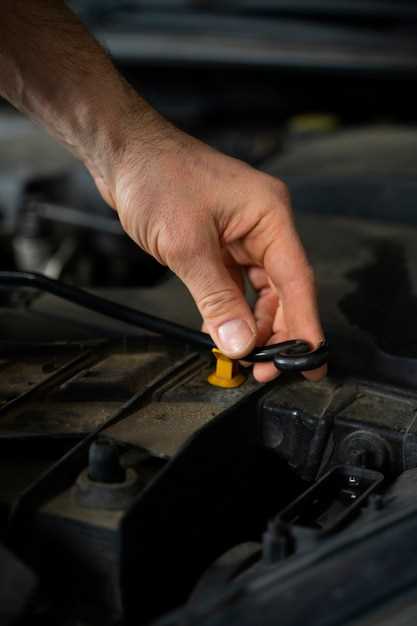
How to check and top off engine fluids
- Dominique Kaye
- 0
- Posted on

Maintaining your car is essential for its longevity and performance, and one of the critical aspects of car care involves regularly checking and refilling engine fluids. These fluids, including engine oil, coolant, transmission fluid, and brake fluid, play a vital role in ensuring that your engine runs smoothly and efficiently. Neglecting to monitor these fluids can lead to severe engine problems, compromising not only your vehicle’s performance but also your safety on the road.
Understanding how to check and refill these engine fluids is a fundamental skill for any car owner. Knowing the right procedures and frequencies for checking fluid levels will help you stay ahead of any potential issues, saving you time and money in the long run. In this article, we will guide you through the necessary steps to ensure your engine fluids are at optimal levels, providing your car with the best care possible. Keeping an eye on these vital liquids not only protects your engine but also enhances the overall driving experience.
Whether you are a seasoned mechanic or a novice car owner, having the knowledge to care for your vehicle can empower you to make informed decisions regarding maintenance. After all, your engine is the heart of your car, and taking proactive measures in fluid management will extend its life and performance capabilities. Join us as we dive into the specifics of checking and refilling engine fluids effectively.
Identifying the Right Engine Fluids for Your Vehicle
Proper care of your car goes beyond regular maintenance; it involves ensuring that the right fluids are utilized for optimal performance. The engine is the heart of your vehicle, and understanding which fluids to use can greatly extend its lifespan and efficiency.
First, consult your owner’s manual to identify the specific types of fluids recommended by the manufacturer. This includes engine oil, transmission fluid, coolant, brake fluid, and power steering fluid. Each type has distinct properties tailored to your car’s design.
Engine oil is critical for lubrication, while transmission fluid ensures smooth gear shifts. Coolant prevents overheating, and brake fluid is essential for effective stopping power. Regularly checking the levels and the condition of these fluids will help you maintain your vehicle in good running order.
Be aware of the various specifications, such as viscosity ratings for engine oil, which can affect performance. Using the wrong type of fluid can lead to serious engine damage. Therefore, it is crucial to use quality brands that meet industry standards.
In summary, identifying and using the correct engine fluids is fundamental to keeping your car in peak condition. Taking the time to understand what your vehicle needs will not only enhance its performance but also ensure safety on the road.
Step-by-Step Guide to Checking Fluid Levels
Maintaining the proper levels of engine fluids is crucial for the overall health of your car. Regular checks can prevent costly repairs and ensure smooth operation. Follow this guide to check and care for your vehicle’s fluid levels effectively.
1. Gather Your Tools
Before you start, make sure you have the following items:
- Clean rags or paper towels
- Funnel (for refilling)
- Container for catching spills
- Safety gloves
2. Park Your Car
Ensure your car is parked on a level surface and that the engine is cool. This will help you accurately gauge fluid levels and prevent burns.
3. Check the Engine Oil
- Locate the dipstick, usually marked with a bright handle.
- Pull it out, wipe it clean with a rag, and reinsert it fully.
- Remove the dipstick again to check the oil level; it should be between the indicated marks.
- If low, add the appropriate type of oil using a funnel.
4. Inspect Coolant Levels
- Find the coolant reservoir. It is typically a translucent plastic tank.
- Check the markings on the side to see if the fluid is at the recommended level.
- If it’s low, add a mixture of coolant and water as specified in your owner’s manual.
5. Examine Brake Fluid

- Locate the brake fluid reservoir, usually near the back of the engine bay.
- Check the level against the markings on the reservoir.
- If necessary, carefully add brake fluid to the proper level, ensuring you use the correct type.
6. Check Transmission Fluid
- With the engine running and warm, locate the transmission dipstick.
- Remove it, wipe it clean, and reinsert it fully.
- Check the fluid level; it should be within the marked range.
- Add fluid if needed, following the manufacturer’s recommendations.
7. Verify Power Steering Fluid
- Find the power steering fluid reservoir, usually labeled and located near the engine.
- Check the fluid level and condition; it should be clear and free of debris.
- Add fluid if necessary, ensuring to use the correct type.
8. Examine Windshield Washer Fluid

- Locate the windshield washer fluid reservoir, often marked with a washer icon.
- Check the fluid level; there should be adequate fluid for use.
- Fill with washer fluid if it’s low.
After you’ve completed these checks, ensure that all caps are securely fastened and dispose of any used rags properly. Regular checks on engine fluids help keep your car performing at its best and extend its lifespan.
How to Properly Refill Each Fluid Type
Maintaining your car requires careful attention to various fluids. Knowing how to refill each type is essential for optimal performance and longevity. Here’s a guide for proper refilling procedures.
Engine Oil: Begin by checking the oil level using the dipstick. Ensure the car is on a level surface, and the engine is cool. If the oil is low, remove the oil filler cap and add oil slowly using a funnel, checking frequently to avoid overfilling. Choose the correct oil type as specified in your owner’s manual for the best care of your engine.
Coolant: Check the coolant reservoir when the engine is cool to prevent burns. Remove the cap carefully and add a 50/50 mix of antifreeze and distilled water if necessary. Ensure that you don’t exceed the maximum fill line to maintain proper car cooling performance.
Brake Fluid: Locate the brake fluid reservoir, usually near the back of the engine bay. Clean the cap and area before opening, then check the level. If the level is low, pour in the recommended brake fluid type until it reaches the proper level. Be cautious as brake fluid can damage paintwork.
Transmission Fluid: Check the transmission fluid level with the engine running in park mode. Use the dipstick to check the fluid condition and level. If low, add the recommended type of transmission fluid slowly through the dipstick tube, ensuring you don’t overdose, as it can lead to shifting problems.
Power Steering Fluid: Open the power steering fluid reservoir cap and inspect the level. If it’s below the recommended mark, add the appropriate power steering fluid carefully. Make sure to choose the right type to maintain efficient steering response.
Windshield Washer Fluid: This fluid is straightforward to refill. Locate the windshield washer fluid reservoir and pour the fluid in, filling it until it reaches the top. Choose a fluid that works well in all weather conditions to ensure clear visibility.
Regularly checking and refilling your car’s fluids is crucial. Proper maintenance contributes significantly to the lifespan and safety of your vehicle. Follow these guidelines to ensure your car runs smoothly.
